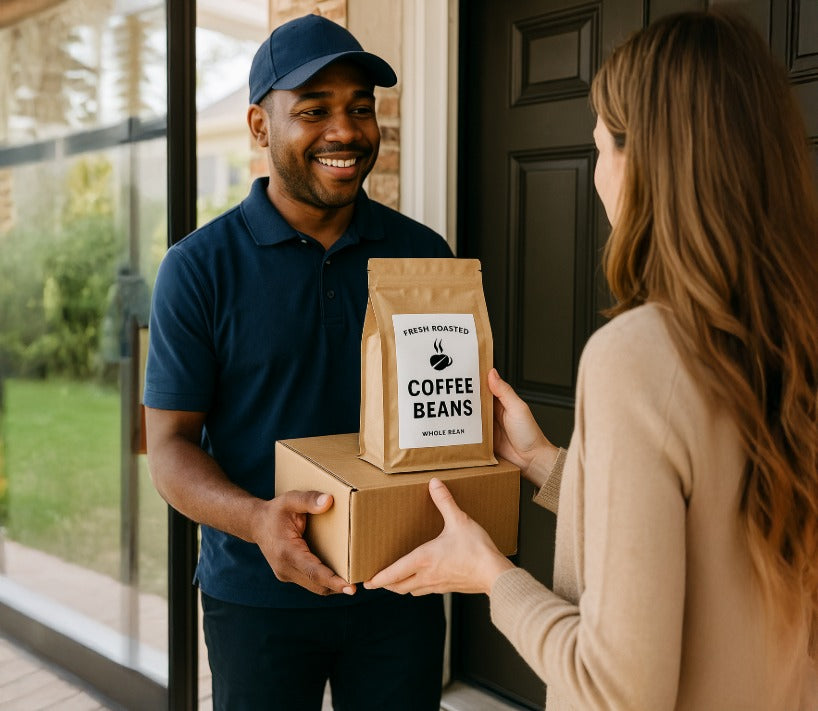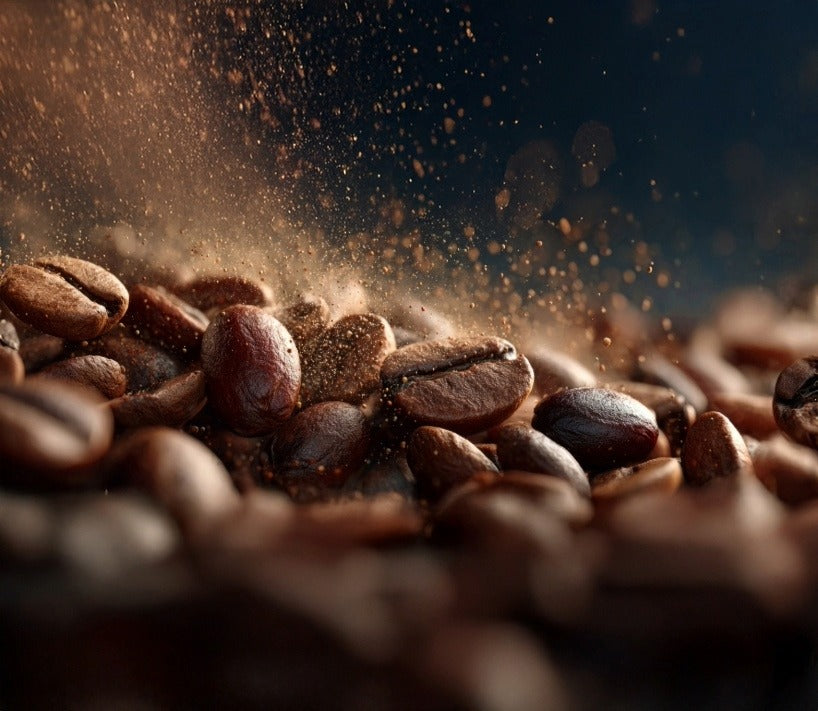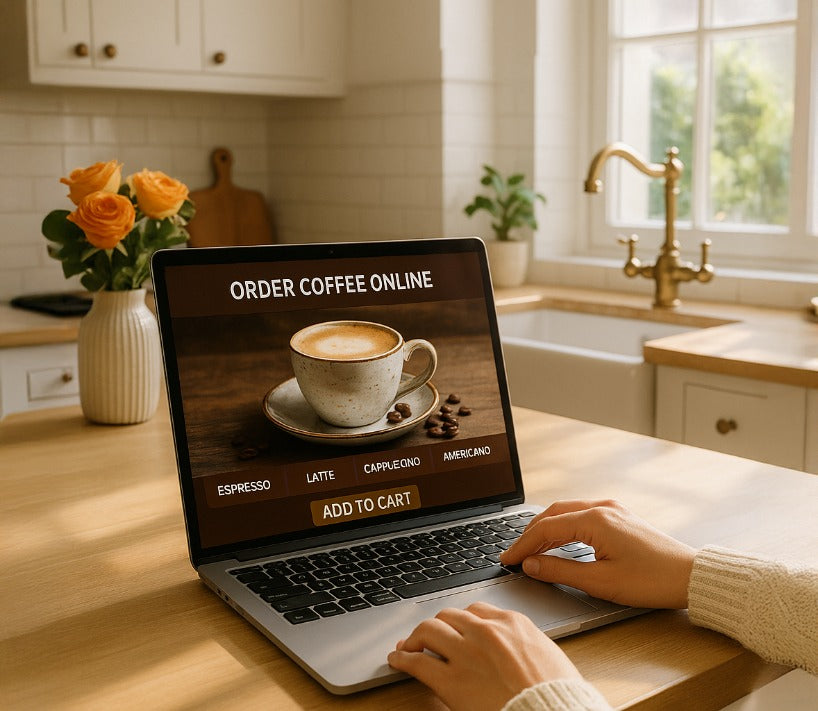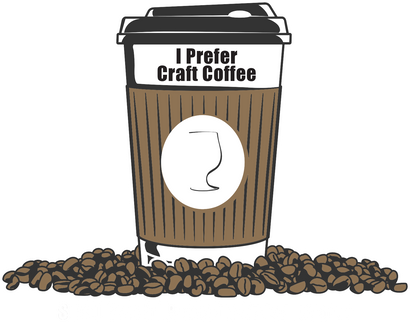How To Make Cafe-Level Coffee at Home
September 29, 2025 5 min read
How To Make Cafe-Level Coffee at Home
I’ll be real: my first home brews tasted like hot cardboard.
Then I fixed three simple things—and my cup went from “meh” to café-level fast.
How To Make Cafe-Level Coffee at Home comes down to this:
-
Buy fresh, high-scoring specialty coffee (no roast date = hard pass).
-
Grind right before you brew with a decent burr grinder.
-
Use filtered water (you can taste minerals and chlorine, and not in a good way).
That’s it. Simple. Repeatable. Tasty.
Why These Three Rules Work:
1) Fresh, high-scoring specialty coffee (with a roast date)
Fresh coffee is alive with aroma. Old coffee is sleepy.
High-scoring beans are graded for sweetness, clarity, and balance—so you’re starting with better raw material.
-
Look for a clear roast date, not just “best-by.”
-
Aim for roast to order coffee from small batches.
-
Try options you love: light roast coffee beans online, medium roast coffee beans online, dark roast coffee beans online delivery, even best decaf coffee beans online—all can be great if they’re fresh.
When you buy specialty coffee online, you control the freshness and the style. It’s also easy to find air roasted coffee beans for clean, even roasts with less bitterness.
Want examples of what I roast and why? Shop my coffees and peek at roast dates and flavor notes.
2) Grind right before you brew (burr grinder > blade)
Ground coffee has more surface area, so it stales fast. Like… really fast.
A burr grinder gives even particle size, which gives even extraction. That means sweeter cups and fewer bitter spikes.
-
Target grind:
-
Pour-over: medium-fine
-
AeroPress: medium
-
Drip: medium
-
Espresso: fine and consistent
-
-
If you need ideas for the best pour over coffee beans online or best espresso beans online delivery, I keep notes by brew type in my guides.
3) Filtered water (not straight hard tap)
Coffee is ~98% water. If your water tastes like a pool or pennies, your coffee will too.
Use a simple carbon filter or filtered pitcher. Aim for water that tastes clean on its own.
-
Start with 195–205°F water.
-
Standard brew ratio: 1:16 (1 gram coffee : 16 grams water).
-
Tap taste test: if you wouldn’t drink it, don’t brew with it.
What You’ll Get If You Follow This:
Follow these three, and you’ll get best tasting craft coffee at home—café-level body, sweetness, and clarity. You’ll also avoid the common traps while you order coffee online: mystery dates, dusty beans, and bitter cups.
I promise: if you stick to fresh beans, burr-ground right before, and filtered water, you’ll taste a jump in sweetness and balance within days—no barista cape required.
-
Prefer single origins? Explore single origin coffee beans online for clear fruit, floral, or cocoa notes.
-
Want consistency? Blends are your friend.
-
Need convenience? Consider a best coffee subscription for home so coffee beans delivered to your door arrive fresh on schedule.
Get my longer buying breakdown here: Order Coffee Online Like A Pro.
Exact Steps To Brew Café-Level Cups
Step 1 — Choose the right beans (fresh + high-scoring)
-
Check the roast date (not just best-by). Fresh = flavor.
-
Pick a profile you like:
-
Bright & juicy? Try light roast or fruit-forward single origins.
-
Balanced & chocolatey? Medium roast blends or origins from Latin America.
-
Deep & syrupy? Dark roast done right.
-
-
Keep it simple: start with 12 oz at a time and store in a cool, dark place (sealed).
Browse styles here: Shop my coffees and Best Coffee Bean Buying Guide & Tips.
Step 2 — Grind right before brewing (burr > pre-ground)
-
Measure 18 g coffee to 288 g water (that’s 1:16).
-
Grind size examples:
-
Pour-over (V60/Kalita/Fellow Aiden): medium-fine
-
Automatic drip: medium
-
AeroPress: medium
-
Espresso: fine and dial-in
-
-
Taste and adjust:
-
Sour/weak → grind finer or brew longer
-
Bitter/ashy → grind coarser or brew shorter
-
Step 3 — Use filtered water + simple recipe
-
Heat to 200°F (or boil, wait 30 seconds).
-
Rinse paper filter.
-
Bloom 30–45 sec with 2–3x coffee dose in water.
-
Pour in slow circles until you hit your target weight.
-
Total time:
-
Pour-over: 2:30–3:30
-
AeroPress: 1:30–2:00
-
Drip: 4–6 min
-
Espresso: 25–35 sec
-
Easy upgrade: Fellow Aiden Brewer
Want set-and-forget pour-over taste every morning? The Fellow Aiden makes pour-over simple and consistent. Great with fresh roasted coffee beans online. It’s my favorite “minimal effort, maximum taste” jump.
Quick Comparison Table (the three choices that change everything)
| Practice | Better Option | Worse Option | Why It Matters | Taste Difference |
|---|---|---|---|---|
| Beans | Fresh, high-scoring specialty with roast date | Old beans / no roast date | Aromas and sugars fade fast; staling mutes sweetness | Fresh = sweet, clear, aromatic; Old = flat, woody |
| Water | Filtered water | Hard tap / chlorinated | Minerals & chlorine distort flavors | Filtered = clean, balanced; Tap = metallic, harsh |
| Grind | Grind right before (burr) | Pre-ground / blade | Fresh grounds = even extraction; old grounds = stale | Fresh-ground = sweet, lively; Pre-ground = dull, bitter |
Freshness, buying, and specialty coffee guidance:
Roast date vs best-by
-
Roast date tells you when flavor started peaking.
-
Best-by can be months away and doesn’t mean fresh.
-
Sweet spot: generally 4–21 days post roast (varies by method).
Ordering coffee online—do it like a pro
-
Choose small batch coffee roasters online that print roast dates.
-
Prefer fresh roasted coffee delivery and specialty coffee bean delivery options with quick turnaround.
-
If you like convenience, set up a schedule (best coffee subscription for home) so the best coffee beans to buy online show up when you need them.
-
Expert tip: Don’t buy discounted coffee. It’s often old stock pushed to clear a warehouse.
Learn the full system: Order Coffee Online Like A Pro.
Single origin vs blends (which should you pick?)
-
Single origin = clear, distinct notes (berries, citrus, florals, cocoa). Awesome for tasting new regions.
-
Blends = built for balance and repeatable flavor. Great for milk drinks and “set it and forget it.”
Explore both with my Curated Better Morning Coffee at Home Program—I match beans to your taste and brew method.
FAQ: How To Make Cafe-Level Coffee at Home
Q1. What is the fastest way to improve flavor at home?
Switch to fresh, high-scoring specialty beans with a roast date, grind right before you brew, and use filtered water. That trio gives the biggest jump.
Q2. How do I store beans for best results?
Keep them sealed, cool, and dark. Buy smaller amounts more often. Plan around your usage or a fresh roasted coffee delivery schedule.
Q3. What grind size should I start with?
Pour-over: medium-fine; drip: medium; AeroPress: medium; espresso: fine. Adjust based on taste: sour → finer, bitter → coarser.
Q4. Can I get café-level results with an automatic brewer?
Yes. Use a quality machine (the Fellow Aiden is a great upgrade), fresh beans, a burr grinder, 1:16 ratio, and filtered water.
Q5. Are single origins better than blends?
Neither is “better.” Single origin coffee beans online bring distinct notes; blends are consistent and balanced. Pick what fits your taste and drinks.
Q6. What about ethics and organics?
You can find fair trade coffee beans online and organic specialty coffee beans online that are also fresh and tasty—just keep the roast date rule.
Final reminders for your brew
-
Use a 1:16 ratio and 200°F water to start.
-
Keep grind even and adjust by taste.
-
Rotate beans every few weeks for peak flavor.
-
For easy mornings that still taste like a café, consider a schedule: coffee beans delivered to your door from a small batch roaster.
PS: Want a no-guesswork delivery plan? Grab my free “Deliver Morning Magic” guide here:
https://iprefercraftcoffee.com/blogs/news/best-coffee-bean-delivery-2025-fresh-roasted-fast-shipping
Proudly air-roasted, small-batch, and freshness-first—so you can keep winning breakfast.
Also in Best Coffee To Buy Online Education

Best Fresh Roasted Coffee Delivery Online
November 28, 2025 4 min read
I roast the best tasting coffee at home for you! I use 100% electric equipment, so no hydrocarbons here. Best fresh roasted coffee delivery starts with high-scoring specialty coffee online.

Which Roaster Makes Better Coffee: Gas or Electric?
November 27, 2025 4 min read
Why electric drum roasters produce cleaner, sweeter, more consistent coffee—especially the kind you want when buying fresh roasted coffee beans online or trying to make the best tasting craft coffee at home.

Biggest Coffee Buying Mistake at Home
November 26, 2025 4 min read
Learn why the roast date matters and how to buy fresh, high-quality specialty coffee online. No guesswork when you order coffee online with me. I only stock, roast, and process the best tasting craft coffee at home. I am YOUR personal roaster.
